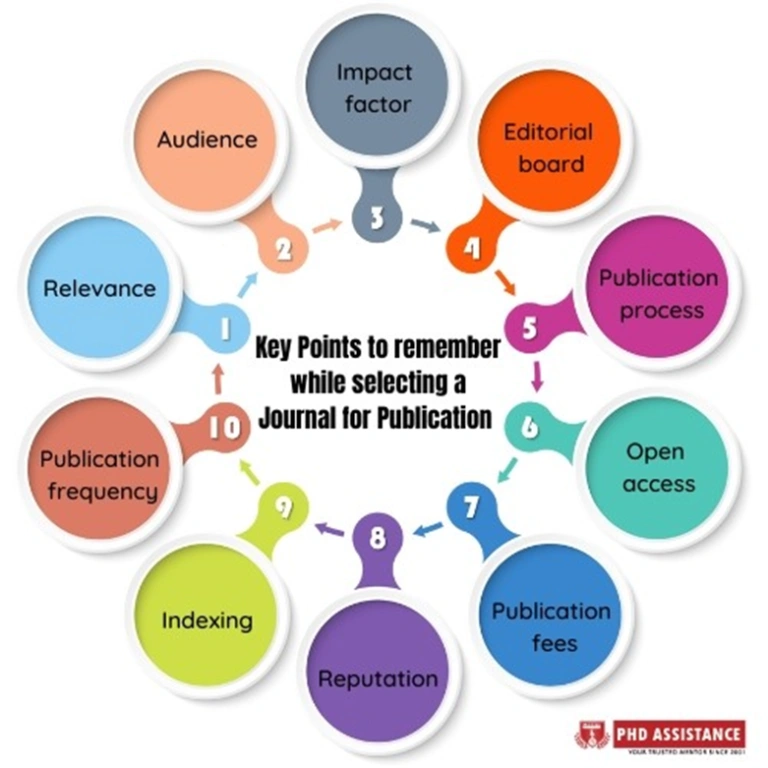Key Points to remember while selecting a Journal for Publication
The scientific rigor of the journal’s research papers is an important measure of journal quality. When considering publishing in a new or unfamiliar journal, start by reviewing recent publications to evaluate details such as the purpose of the research, design and methodology, data analysis, results, and discussion, all of which can provide insight into scientific quality. Tables and figures must be well-labeled, readable, and relevant to the data. References should be complete and up to date. The measures followed by the journal to ensure scientific rigor during the peer review process provide insight into the publication’s commitment to scientific rigor.
Introduction
Here are some key points to remember while selecting a journal for publication
- Relevance: The journal should be relevant to your research topic and align with your research goals and objectives.
- Audience: The journal should have a target audience that includes your peers and other researchers who are interested in your research area.
- Impact factor: Check the journal’s impact factor to determine its credibility and how widely it is read and cited in your field.
- Editorial board: Look at the journal’s editorial board to see if it includes well-known experts in your field.
- Publication process: Check the journal’s publication process, including the peer review process, submission guidelines, and publication timeline.
- Open access: Consider whether the journal is open access and whether it aligns with your publication goals.
- Publication fees: Check if there are any publication fees or charges associated with publishing in the journal.
- Reputation: Consider the journal’s reputation within your field, including how well-known it is, how long it has been around, and whether it is well-respected.
- Indexing: Check if the journal is indexed in well-known academic databases such as Scopus, Web of Science, or PubMed.
- Publication frequency: Consider the publication frequency of the journal and how often it publishes articles in your field.

By considering these key points, you can decide which journal is best suited for your research and increase your chances of getting your work published in a reputable academic publication (Suiter AM 2019).
Conclusion
Publishing in low-quality journals can undermine the credibility of your research, limit your career opportunities, and result in little or no distribution and adoption. An excellent beginning point for picking a journal for your publication is the publications you, your coworkers, and your mentors utilize for research and clinical treatment. The next step is to evaluate the scientific rigor and editorial quality of the papers in the journal you are considering. Transparency from the journal on its goal and scope, the editorial board, indexing status, the peer review process, reputation, and author policies are all important markers of quality journals. These factors can assist in identifying high-quality journals for publishing.
PhD Assistance
Ph.D. assistance, a team of experts, has a strong foundation and experience in handling research and analysis work across the globe. Given that our team has handled Ph.D. /doctorate /DBA students from the USA, Australia, UK, and other international top universities, the ultimate goal is to transfer our knowledge, experience, skills, and learnings to students.
References
Suiter AM, Sarli CC. Selecting a Journal for Publication: Criteria to Consider. Mo Med. 2019 Nov-Dec;116(6):461-465. PMID: 31911720; PMCID: PMC6913840.



